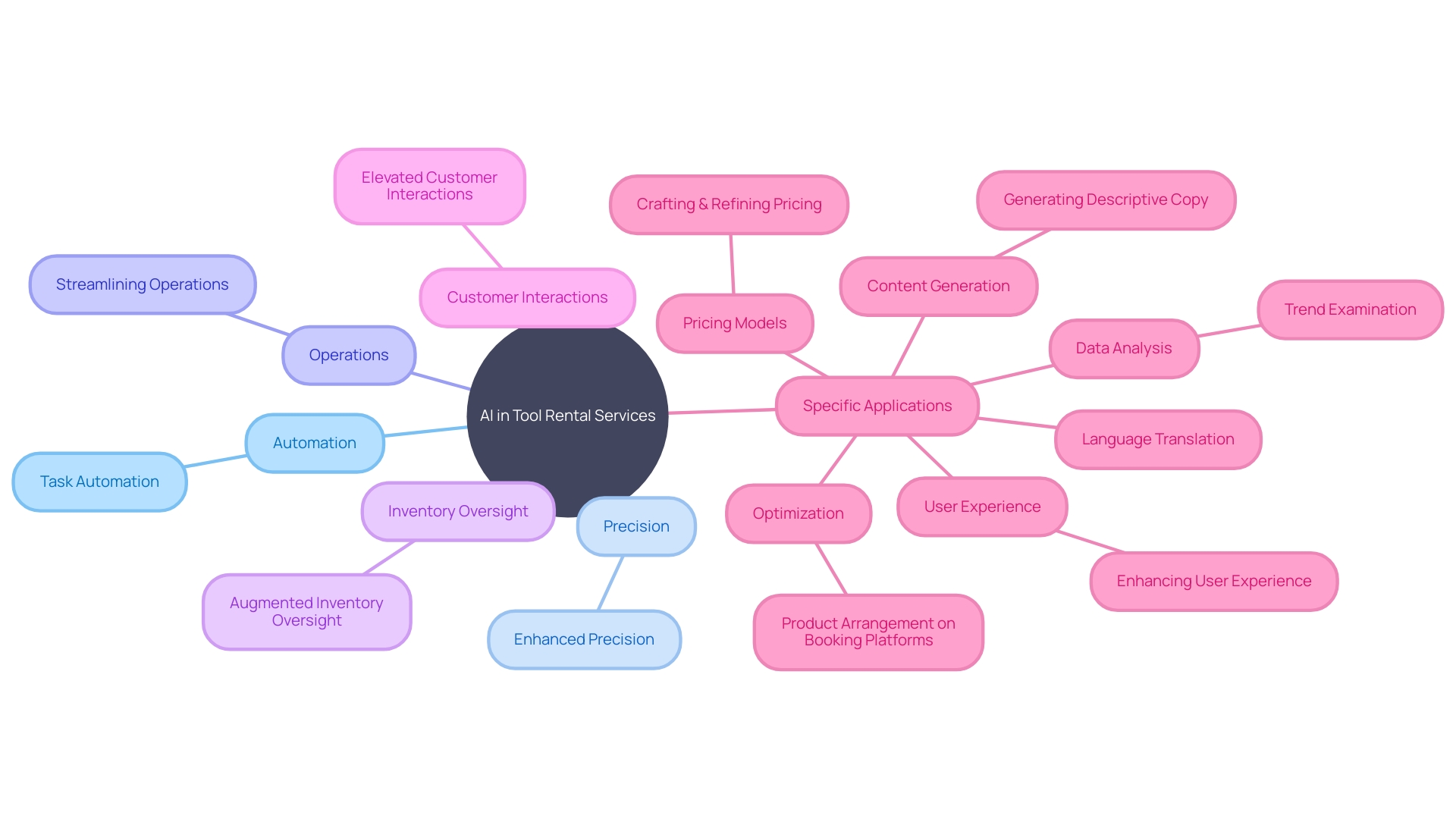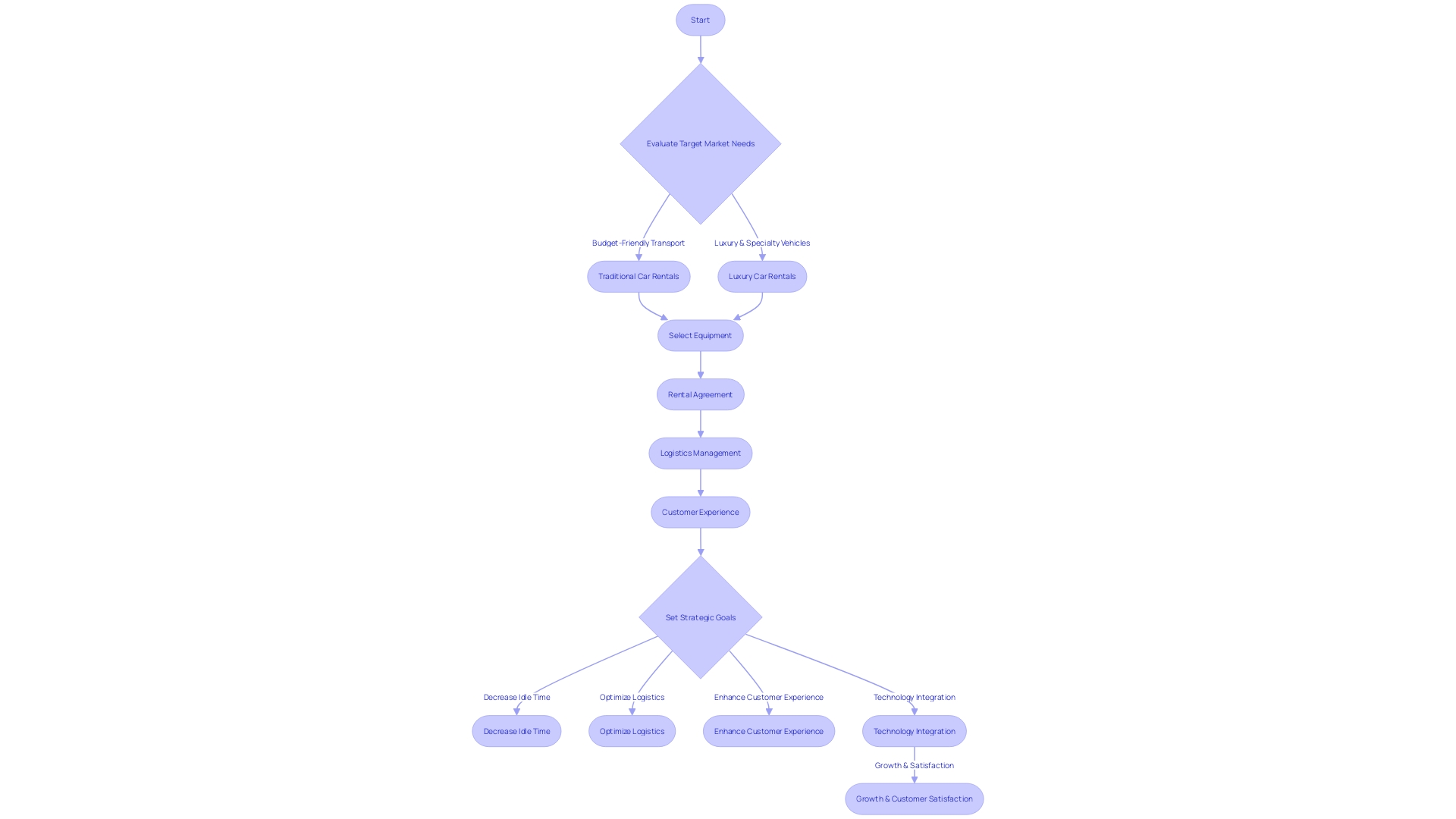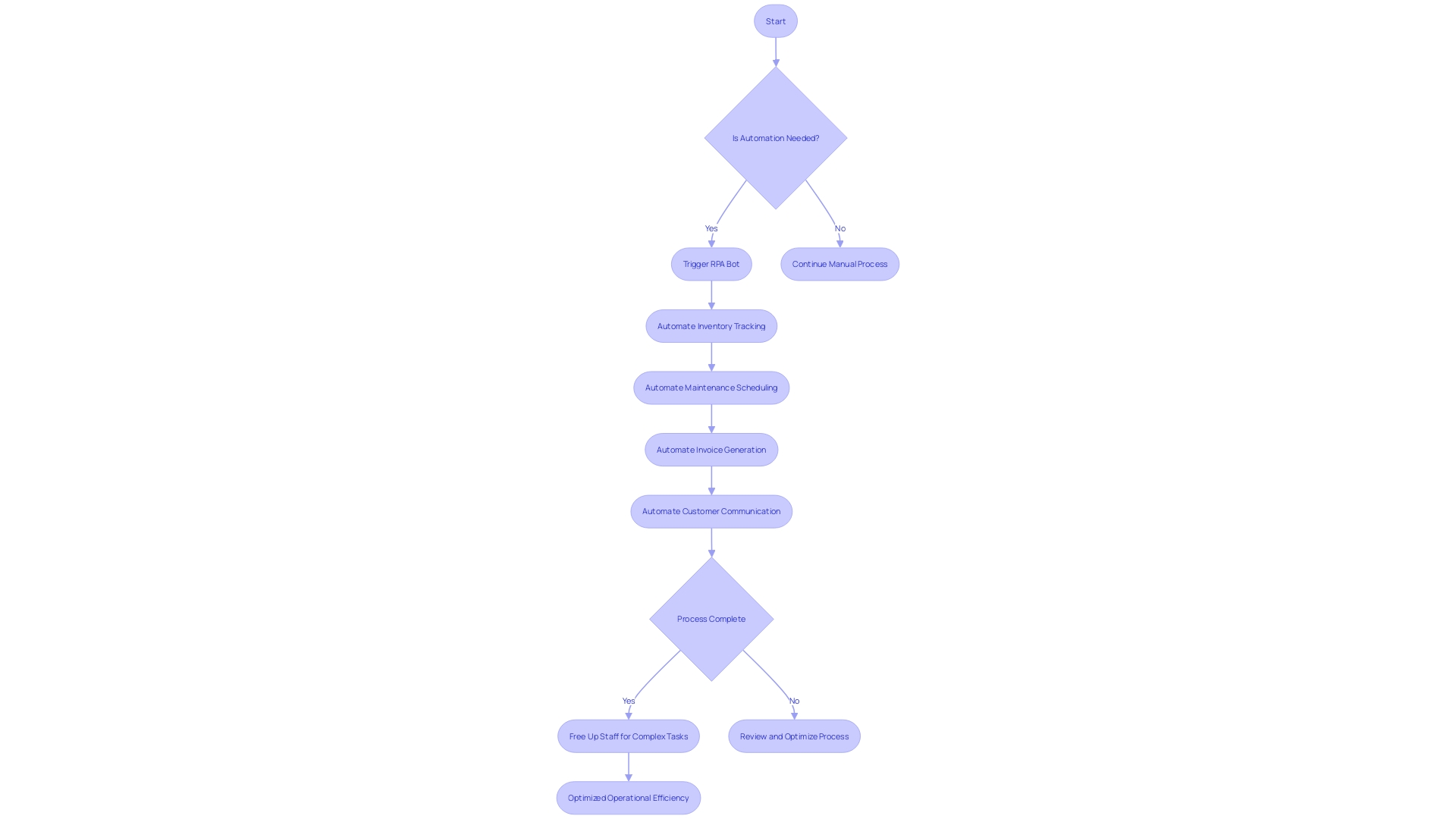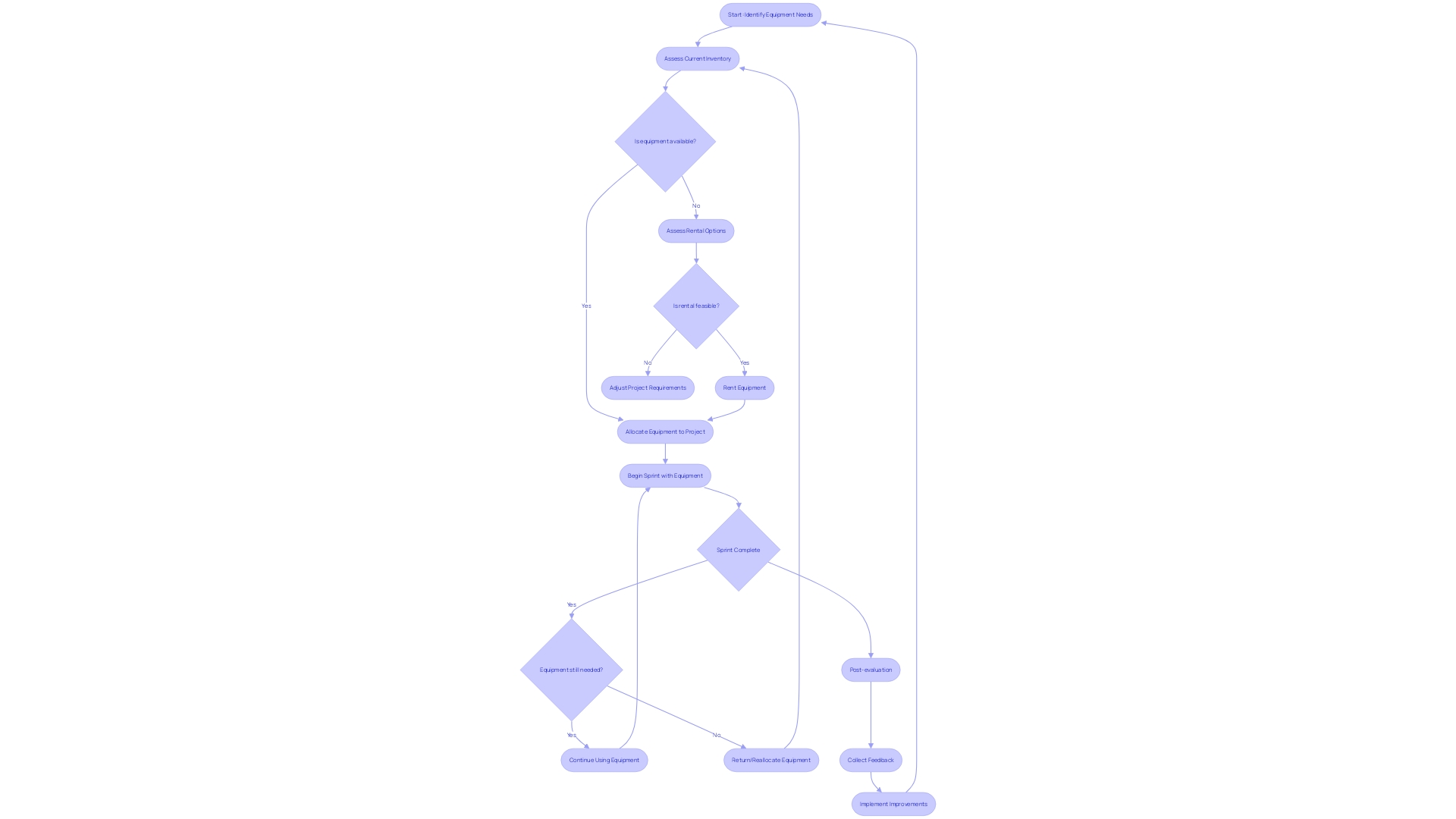Introduction
Efficiency in tool rental services is crucial for maximizing productivity and streamlining workflows. In a world where cost-saving and productivity enhancement are paramount, tool rental services offer a practical solution.
However, achieving optimal efficiency goes beyond just trimming costs. It involves improving communication, adopting the right technology, setting clear goals, and utilizing automation tools.
This article explores various strategies and techniques that can help tool rental services enhance their efficiency and deliver exceptional customer experiences. Whether it's implementing AI content tools, setting clear goals, using automated tools, improving estimation and prioritization, implementing agile practices, maximizing efficiency with listicle content, or crafting powerful headlines, this article covers it all. Discover the key to success in tool rental services by unlocking the untapped potential of efficiency.
Understanding the Need for Efficiency in Tool Rental Services
The quest for peak operational efficiency is as pressing now as it was following the economic downturn of fifteen years ago. In this climate, tool rental services emerge as more than just a means to evade hefty initial expenditures – they are pivotal for catalyzing streamlined, high-yield workflows.
Prioritizing efficiency in utilizing these services isn't merely about trimming costs; it's about amplifying productivity and refining project deliverables. Capitalizing on rental services necessitates a continuous commitment to improving communication, a key investment that transcends traditional optimization confined to search engines or data analytics.
The deeper understanding that technology is not solely restricted to hardware advancements, but also encompasses the systemic organization of work processes, invigorates this pursuit of efficiency. By focusing on the frequency of tool usage and adopting a precise unit of measure for cost analysis, project scoping molds to the unique contours of each use case, enabling precision in resource allocation. As such, productivity isn't just about the tools we wield but also hinges on ingenious insights into the orchestration of our operations, recalling the revolution brought forth by Ford's assembly line approach. Embracing this dual understanding of technology can help unlock unseen potentials in operational productivity.
Benefits of Implementing AI Content Tools in Tool Rental Services
Harnessing the power of artificial intelligence (AI) content tools has revolutionized industries by automating mundane tasks and enhancing precision, all the more critical in tool rental services. They have proven efficacy in not just streamlining operations but also augmenting inventory oversight and elevating customer interactions.
AI content applications facilitate crafting and refining pricing models, sifting through data for trend examination, and extracting actionable intelligence that culminates in astute business choices. In a practical scenario, imagine the laborious work hotels endure drafting abundant and various types of content for their digital and print media platforms.
AI swiftly generates descriptive copy and even translates it into multiple languages promptly, demanding only a cursory human review. Not limited to composition, Ai's prowess in optimizing product arrangement on booking platforms, though not widespread in hospitality, mirrors its success in the retail e-commerce sector, effectively dissecting legions of historical customer interactions to tailor an immensely more satisfying user experience. Such adaptive technology invites exploration for tool rental services looking to capitalize on market opportunities and refine the customer journey. Choosing the right AI content provider, however, is pivotal, with top contenders spotlighted by Eli, promising a harmonious alignment with organizational objectives.

Setting Clear Goals for Efficient Tool Rental Services
Rental services have emerged as a potent market force, addressing the evolving needs of a market characterized by a desire for temporary solutions without the long-term financial commitment. The embrace of rental models is rapidly reshaping consumer behavior; individuals recognize the incomparable advantage of accessing a variety of tools without the hefty price tag of ownership. By strategically setting goals aimed at decreasing equipment idle time, optimizing logistical efficiencies, and enhancing overall customer experience, rental businesses can harness the potential for elevated productivity and sustainability.
Armed with adeptly curated strategies, they are positioned to respond to market demands with agility, ensuring resource allocation is both judicious and effective. The rise of this model rides the wave of a broader shift towards a more economically and environmentally conscious society, where the practicality of rental services and the flexibility they provide is highly valued. As the landscape of the rental industry evolves, the confluence of technology and strategic goal-setting will continue to be a cornerstone for growth and customer satisfaction.

Using Automated Tools for Repetitive Tasks in Tool Rental Services
Task automation in tool rental services isn't just about mechanical robots; it also encompasses Robotic Process Automation (RPA), which can vastly improve operational efficiency. RPA utilizes software bots to automate repetitive tasks across various applications.
This transformative technology acts as a digital workforce that can conduct transactions, process data, and even handle customer interactions. Imagine the traditional responsibilities associated with tool rental services—inventory tracking, maintenance scheduling, invoice generation, and customer communication.
RPA can undertake these tasks with impressive speed and accuracy. For instance, a computer can move thousands of records in seconds, achieving more in five minutes than a human could in a day.
By applying automation, triggers are established—such as a rental return—which prompt conditions and result in actions, like updating inventory status or preparing the billing process. Consider the case of companies falling into two groups concerning automation; one seeks full automation and replacement, while the other pursues augmentation and enhancement of roles.
The latter aligns well with the tool rental sector, where the human element remains critical. Software automation integrates triggers, conditions, and actions, freeing up staff for more complex and creative tasks. In terms of cost, the frequency of tool usage and the appropriate unit to run cost analysis are essential. Insights from developer productivity tools like GitHub Copilot indicate significant benefits to productivity across various domains, such as time savings and improved product quality, when AI suggestions are utilized. Applying these findings, rental services can expect similar productivity boosts through precise automation, enhancing customer service and the optimization of resources.

Improving Estimation and Prioritization in Tool Rental Services
Efficiency in the realm of tool rental services hinges on precise forecasting and strategic allotment. Employing data analytics propels this endeavor by accurately predicting tool requirements, aligning them perfectly with project timelines.
The goal is to ensure no resource sits idle while demand peaks elsewhere. This is where historical usage data becomes pivotal, as it guides both the prediction of tool needs and scheduling for peak efficiency.
As such, the frequency usage of tools by end-users dictates the core of our cost analysis, ensuring financial prudence. To untangle the complexities of managing a vast array of tools, prioritization is key.
It encompasses a structured approach wherein initially, a broad spectrum of tools is identified. Subsequently, we refine this down to a concise list, ranked based on criteria such as demand, criticality to project timelines, and frequency of use. Tools are thus effectively categorized which avoids the risk of bottlenecks and underutilization. This echelon system aligns seamlessly with the overarching goal of data science—to convert raw data into actionable insights that foster informed, economically sound decisions. Through this lens, every tool supplied is a strategic asset, optimized for maximum productivity and minimal waste.
Implementing Agile Practices for Efficient Tool Rental Services
Borrowing from agile principles that revolutionized software development, tool and equipment rental services stand to gain from embracing flexibility and iterative planning. Rather than a monolithic approach, where requirements are fixed from the start, adopting an agile framework allows for equipment needs to be assessed and adjusted in 'sprints'. This ensures that resources align with evolving project needs, enhancing resource allocation and customer service.
Agile's emphasis on cross-functional teams also implies that knowledge flows freely, allowing for quick adjustments and improvements. By welcoming change, even at advanced project stages, rental services can better cater to the shifting conditions inherent in the construction field. Today, innovation races forward, and the demand for quick adaptability in equipment rentals follows this trend.
As organizations lean towards agile practices, they acknowledge its proven potential for higher efficiency in dynamic market conditions. Having shifted from being seen as a cost burden, an agile approach to rental logistics and management is now viewed through the lens of value-addition, paving the way for significant cost savings and an enhanced return on investment. Moreover, the incorporation of agile methodologies also poses a promise for increased customer satisfaction; the 'customer-first' approach aligns service offerings with client needs, mirroring the agile mantra where working products—in this case, equipment—are the foremost indicators of progress.

Maximizing Efficiency with Listicle Content in Tool Rental Services
When approaching the dynamic world of tool rental services, efficiency is paramount. Service providers can hone this efficiency by utilizing eLearning content creation tools. Not everyone comes from a technical background, and these tools demystify the lesson-building process for even the non-technically savvy users.
By drawing from eLearning methodologies, tool providers can create effective listicles that showcase their equipment's features, benefits, and applications in straightforward, structured formats akin to lesson plans, readily absorbed by customers from varied professional fields. Moreover, adopting a method similar to evergreen content curation, these listicles offer a depth of value that extends beyond a one-time read. Such content, crafted with care, can serve as a longstanding resource for clients, enabling them to repeatedly leverage the insights provided to match the right tool for the right job—akin to having an ever-reliable guide at their fingertips.
Rentals offer a practical, cost-conscious option for customers. They eschew the financial commitment of a purchase for the versatility of renting, aligned with a market that increasingly values sustainability and economic savvy. Indeed, tool rental services are integral in addressing these emerging consumer behaviors.
Through the strategic curation of content, service providers pinpoint and fill market gaps, educating clients on the best choices for their specific requirements. Realizing this, one observes the significance of the trend: AI tools are ascending in popularity. Content providers adept in such technologies rise as essential partners, promising to enrich the decision-making process and thereby securing alignment with organizational goals.
Crafting Powerful Headlines for Efficient Tool Rental Services
The tool rental services market thrives on the ability to stand out in a crowded field, and it starts with a headline that grabs attention and promises a tangible benefit. Service providers must aim for clarity before cleverness, articulating the problem their service solves before embellishing the language.
A headline that clearly outlines the benefits - such as streamlined project timelines, cost savings, or unique tool features - connects with the target audience by addressing their specific needs. By focusing on their objective to assist renters in achieving efficiency and success in their projects, compelling headlines communicate value succinctly. In this respect, they echo the impeccable advice highlighted in the Content Marketing Institute's guidance on SEO-driven content and design - promise the reader a solution, and deliver it clearly in your headline.
Conclusion
Efficiency is crucial in tool rental services to maximize productivity and streamline workflows. This article explores strategies like implementing AI content tools, setting clear goals, using automated tools, improving estimation and prioritization, implementing agile practices, maximizing efficiency with listicle content, and crafting powerful headlines.
AI content tools streamline operations, improve inventory oversight, and enhance customer interactions. Clear goals decrease equipment idle time and optimize logistical efficiencies, aligning with an economically and environmentally conscious society.
Automated tools, like RPA, free up staff for complex tasks, improving customer service and resource optimization. Data analytics improve estimation and prioritization, ensuring efficient resource allocation and avoiding waste.
Agile practices enhance resource allocation and customer service with flexibility and iterative planning. Listicle content formats educate clients on equipment features and benefits, filling market gaps and aligning with sustainability. Crafting powerful headlines communicates value and attracts customers. In conclusion, efficiency in tool rental services is achieved through communication improvement, technology adoption, goal setting, automation, estimation, prioritization, agile practices, listicle content, and powerful headlines. These strategies unlock potential and deliver exceptional customer experiences.
Maximize your productivity and streamline your workflows with EZ Equipment Rental.




